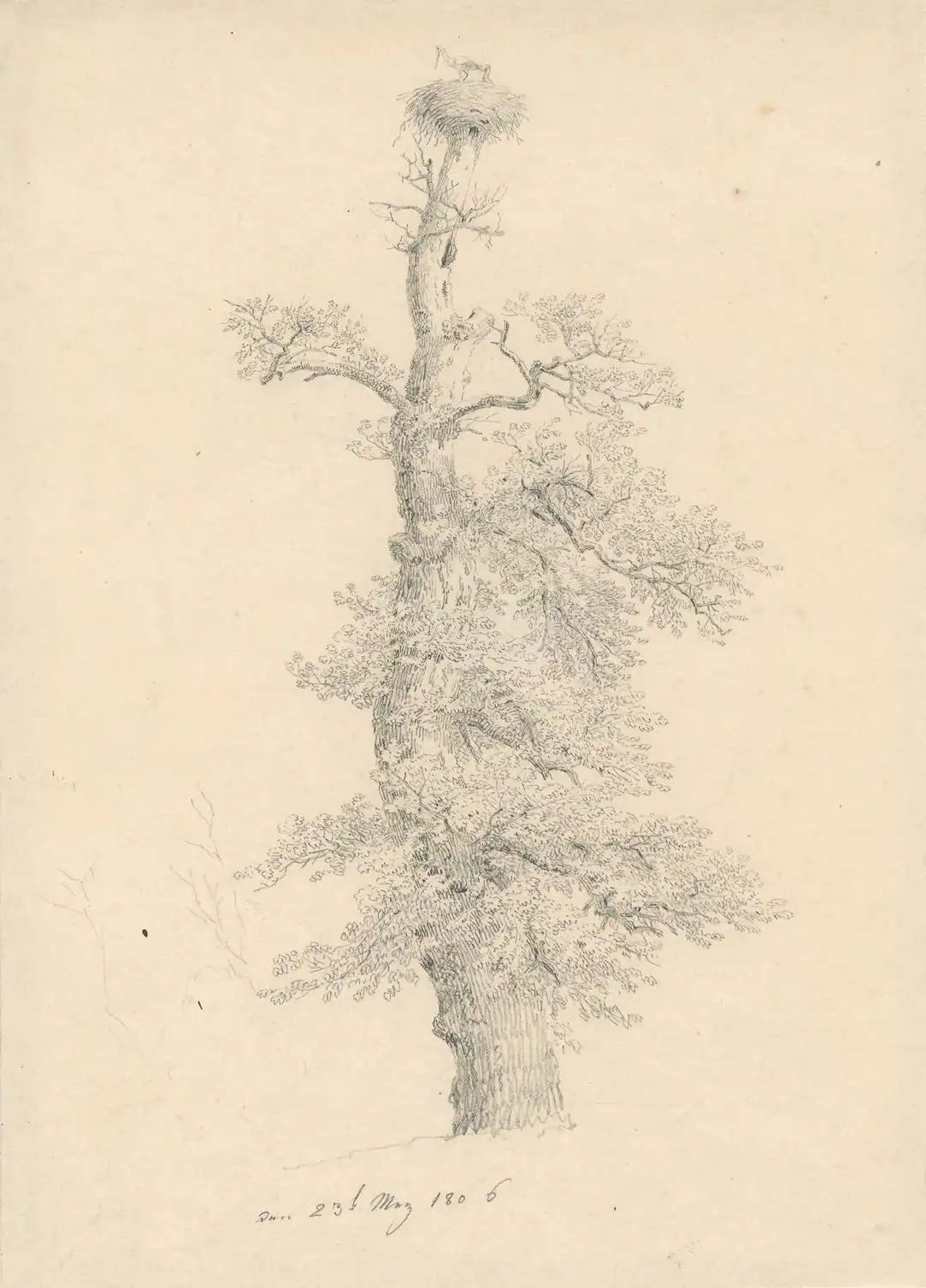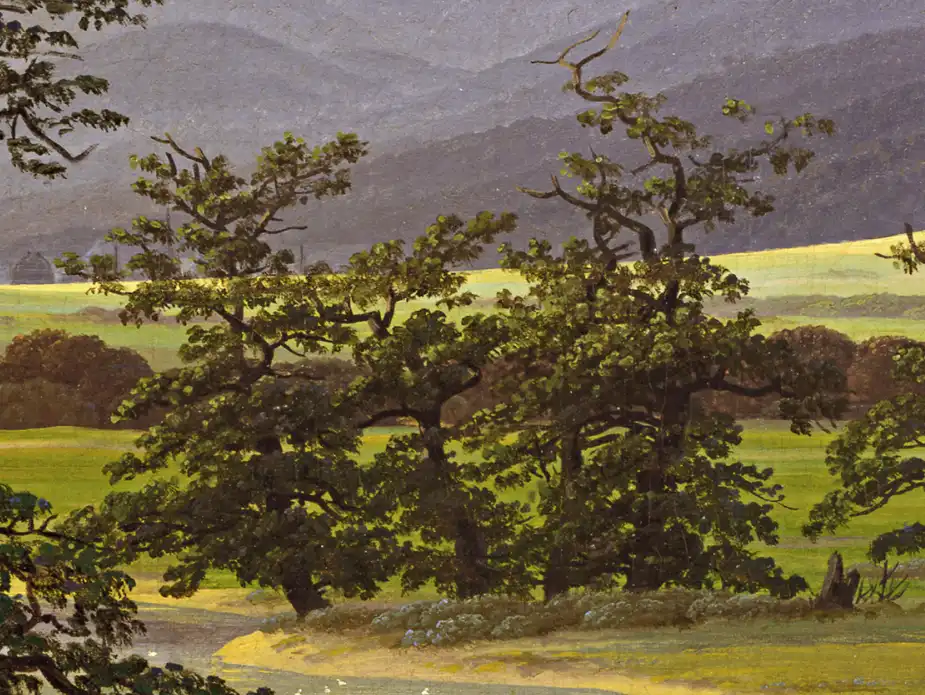Friedrich the Modernist I Observing Nature
In 1906, art lovers, critics, and curators were impressed in particular by Friedrich’s view of nature, and by the use of light and color in his paintings.
After visiting the exhibition in 1906, the art historian Ferdinand Laban wrote about Friedrich:
“He did not view nature through the eyes of an old master. […] Here, you breathe the air of reality.”
Unquestionably, the “reality” we encounter in Friedrich’s pictures is partially the result of his habit of frequent sketching from nature – when he would translate his observations directly into his drawings. Friedrich also used such drawings from nature in the painting The Solitary Tree.




Friedrich’s habit of executing drawings directly from nature prompted critics and curators to acclaim him as a precursor of plein air painting. This process, in which artists paint outdoors (French: en plein air), emerged in England and France during the mid-19th century. It particularly influenced Impressionism.
As a predominantly French art movement, Impressionism initially had a hard time in the late 19th century Germany – the Franco-Prussian War of 1870/71 was probably still resonating. Hugo von Tschudi, director of the Nationalgalerie, made it his mission that this modern style of painting would gain critical acceptance in Germany as well. At the same time, he sought to justify his acquisition policy, which no longer primarily limited itself to German art, but more widely to European art production as a whole.
The curator Hugo von Tschudi, director of Berlin’s Nationalgalerie, wrote in the exhibition catalogue:
“One of the earliest manifestations of a modern landscape sensibility […] was aspired to by […] [C]aspar David Friedrich.”